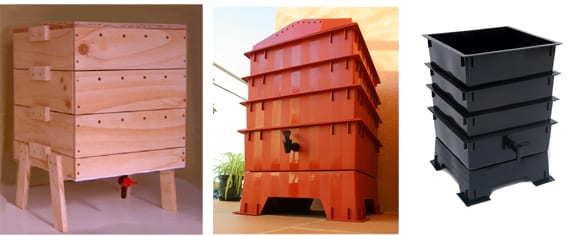
El vermicomposting It is an alternative to the home composting that we talked about yesterday. Yeah we don't have enough space To locate a composter or we do not generate enough waste for it, we can opt for domestic vermicomposting, with which we will create worm castings, a high-quality fertilizer.
It is important that you keep in mind that both processes they are hygienic and do not produce bad odors. With them, we recycle the "non-recyclable" part of our waste, also generating a natural, ecological fertilizer and totally economical for our flowerpot.
El vermicomposting is a transformation of organic matter into a high quality natural fertilizer that we call vermicompost or worm castings. It consists of a biooxidation and stabilization of organic matter, by the main action of worms, together with microorganisms, in an aerobic process, not producing an increase in temperature or generating bad odors.
What do we need?
For the proper development of this process, we need coconut fiber to start the process (some brands supply it with the vemicomposter), red worms or with a vermicomposter, which has several trays that are stacked on top of each other, allowing worms to pass from the lower to the upper trays through holes.
In this way, the worms digest the food that we are placing on the trays and when it is running out they go up to the upper trays where we will place more fresh food. The trays that the worms leave will therefore contain the material that they have digested, eaten and excreted, which has exceptional properties as organic compost.
The worms that best perform this action are the California red worms, which have a great voracity and are capable of digesting a large amount of food. They are purchased in specialty stores or garden centers.
The vermicomposter must be placed in a shadow zone, since worms do not like light, and maintain a good level of humidity. We must incorporate the leftovers as chopped as possible, this will facilitate the action of the worms.
The liquid that is produced during the process is collected in the leachate tray that the vermicomposter has. We can also use this liquid (diluted in water) as fertilizer for our crops.
What foods can we use?
-
Fruit and vegetable leftovers: fruit skins, salad leftovers, etc.
-
Remains of coffee, tea and infusions.
-
Wet egg carton and damp newspaper, cut into pieces on the deposited food.
-
Crushed eggshells.
-
Strawberries, melons and sweet fruit in general are his favorite delicacy. On the contrary, they do not like citrus fruits and bananas too much, but they will also eat them when they have finished what they like best.
In general, the more varied the food we incorporate, the better.
What foods should we not use?
-
We will not use hard pruning debris (dry branches and leaves), since the worms only eat soft organic debris.
-
They do not like meat and fish and they also produce bad smells.
-
Dairy, bone and fatty foods.
El final score of vermicomposting, it is a fine material of dark brown color, without bad odors, which will be a very stable, high-quality fertilizer, with an important contribution of nutrients for our crops and that will considerably improve the functioning of soil microorganisms.
Source: planethuerto.es
More information - Home composting: making compost at home, How to make worm castings? List of organic fertilizers